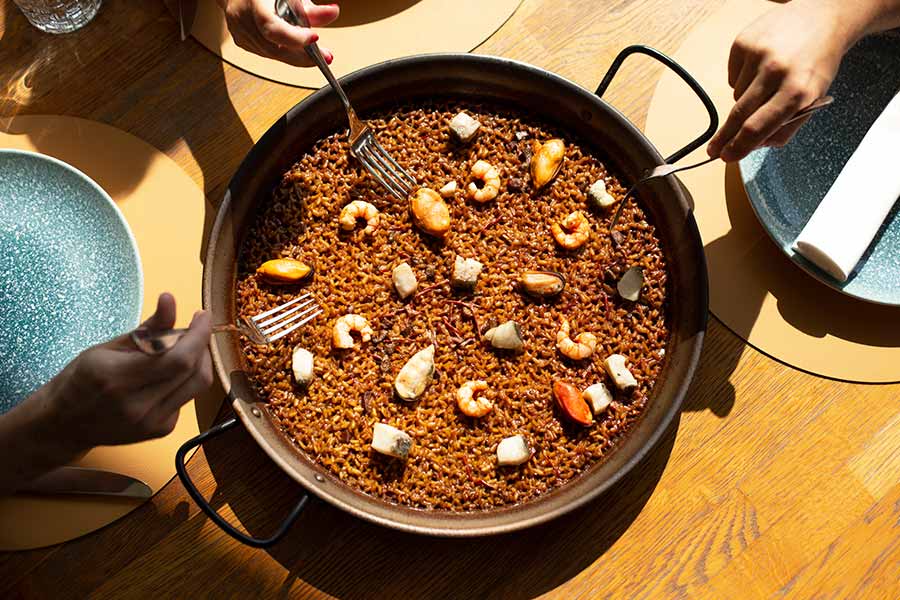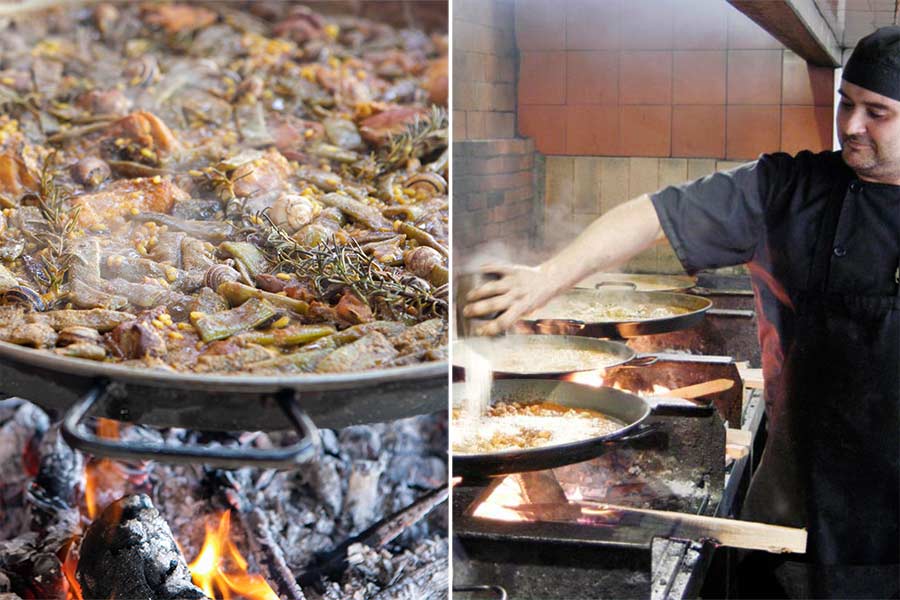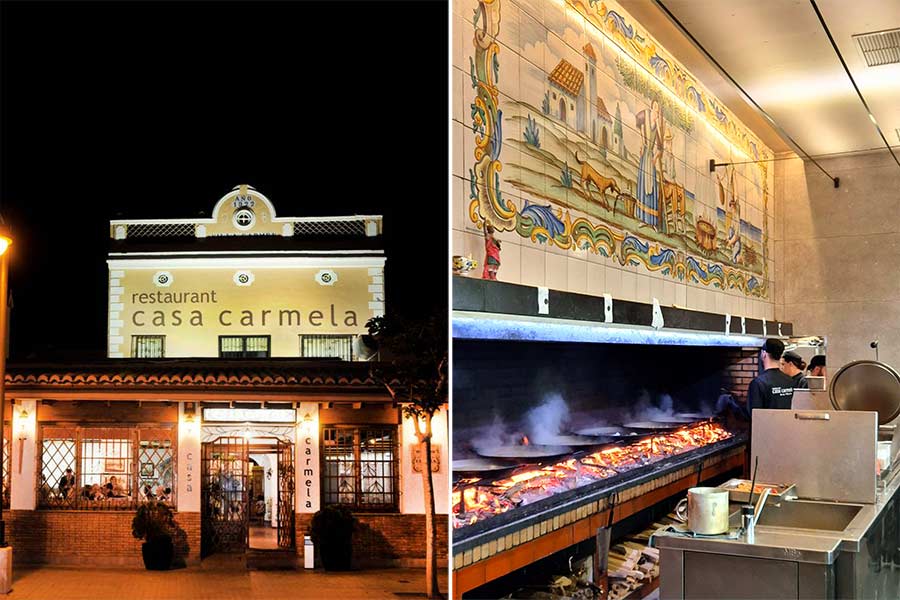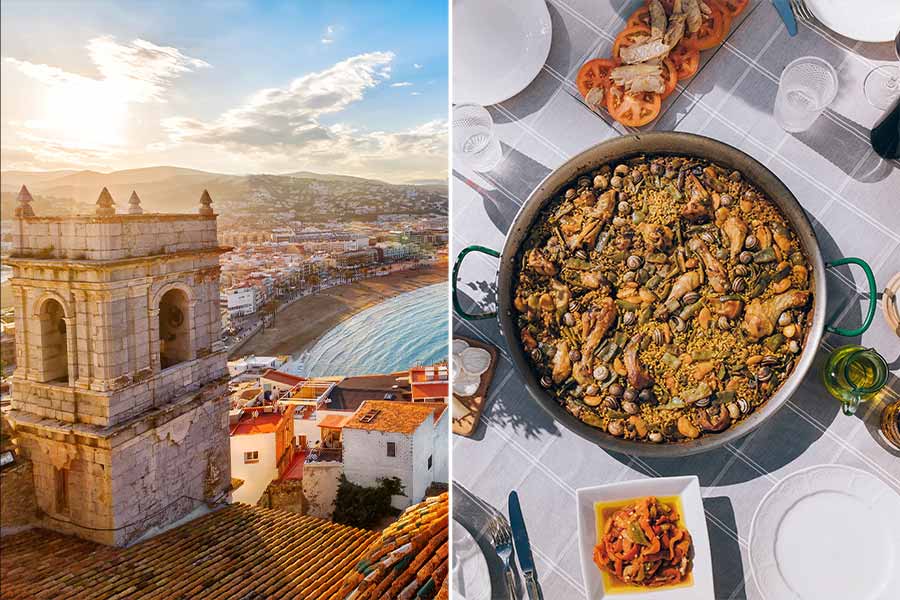“The smoke from the firewood gives our paella its distinctive flavour,” says chef Toni Novo as we stand in the kitchen of his family-owned restaurant, Casa Carmela, on the Malvarossa beachfront in Valencia, Spain. He is the fourth-generation chef of the restaurant, which dates back to 1923 and is named after his great-grandmother, Carmen. The plates and serveware in the restaurant proudly proclaim “El Foq Que Dura 100 Anys,” which means “the fire that lasts a hundred years”.
The ‘origin’ story

The origin of paella can be traced to the 15th or 16th century, and the dish has rather humble beginnings
Paella originated in Valencia, or more precisely, in the Albufera Natural Park area, some 20km south of the city. La Albufera is a large freshwater lagoon on the edge of the Mediterranean, and a major rice cultivating region since the Middle Ages. The origin of paella can be traced to the 15th or 16th century, and the dish has rather humble beginnings. The farmers living and working in the rice fields of Albufera started cooking a rice dish with whatever vegetables and meat they could find. The dish was cooked on open firewood in a shallow two-handled pan called paella, which eventually lent its name to the dish. This healthy, hearty and easy-to-make dish was perfect after a long morning of hard manual labour in the rice fields.
The bomba rice cultivated in Albufera is the star of the show. It’s a short-grain variety with relatively low levels of amylopectin, meaning it doesn’t become sticky when cooked (like sushi rice) nor does it thicken the cooking liquid (like arborio rice used in Italian risotto). It can soak up to three times its dry weight without bursting and holds its structure well after cooking. An interesting side note is that bomba rice is believed to have originated from an Indian variety brought to the Iberian Peninsula via the Middle East. Bomba is one of the most expensive rice varieties in Spain and even holds the Denominación de Origen (D.O.) tag.
Into the mix

True Valencian paella has no seafood; however, seafood paella has become quite popular in Spain, and around the world
While there are many variations, the typical Valencian paella contains chicken, rabbit, snails, green beans and the local garrofón beans (similar to lima beans). Other ingredients include tomatoes, saffron and olive oil. Pieces of chicken and rabbit (on the bone) are fried first, followed by tomatoes, beans and some water infused with saffron and salt. Once all the ingredients are cooked, the rice goes in along with water (some chefs use stock for added flavour) in the proportion of three parts liquid to one of rice. Since the dish is prepared in a shallow pan, the fire heats the pan evenly and the rice at the edges cooks at the same speed as in the centre. True Valencian paella has no seafood; however, seafood paella has become quite popular in Spain, and around the world. There’s also paella mixta, which is a sort of surf-and-turf, and vegetarian paella is widely available as well.
Taste test

While there are many variations, the typical Valencian paella contains chicken, rabbit, snails, green beans and the local garrofón beans
In Valencia, Casa Carmela is one of the few restaurants that cooks the paella in a traditional manner, i.e. over open wood fire. The restaurant uses wood from Valencian orange trees, which imparts a unique aroma to the final dish. You can even watch how the paella is made on a large TV screen that adorns the wall behind the bar. I visit on a mid-week afternoon, and the restaurant is packed with locals and tourists. The paella comes to the table in the pan itself and is served with a wooden spoon (as is traditional).

Casa Carmela is one of the few restaurants in Valencia that cooks the paella in a traditional manner, i.e. over open wood fire
The dish is to share, so my lunch companions and I dig in, carefully sticking to our area of the pan. It may look like a huge dish but the paella is only about two centimetres deep, so it’s not a challenge for three hearty eaters! The best part of the paella is the delicious socarrat or the slightly caramelised layer of rice at the bottom of the pan that I greedily scrape off with my spoon.

After a 45-minute boat ride around the Albufera, you can enjoy a hearty lunch at El Palmar Restaurant, where you can relish four appetisers and share a paella too
Other excellent paella restaurants in Valencia include Restaurante Levante, La Pepica and the Michelin Bib Gourmand restaurant Napicol (the last is set in the countryside about 10 minutes from the city). Another great way to sample paella in Valencia is to head to the source for the ultimate culinary experience — a 45-minute boat ride around the Albufera, followed by a hearty lunch at El Palmar Restaurant, where you can savour four appetisers and share a paella. This is, after all, the correct way to relish paella — on a sunny afternoon, gathered around a pan with friends (or even strangers), eating it straight from the pan with a wooden spoon.

